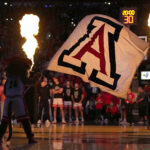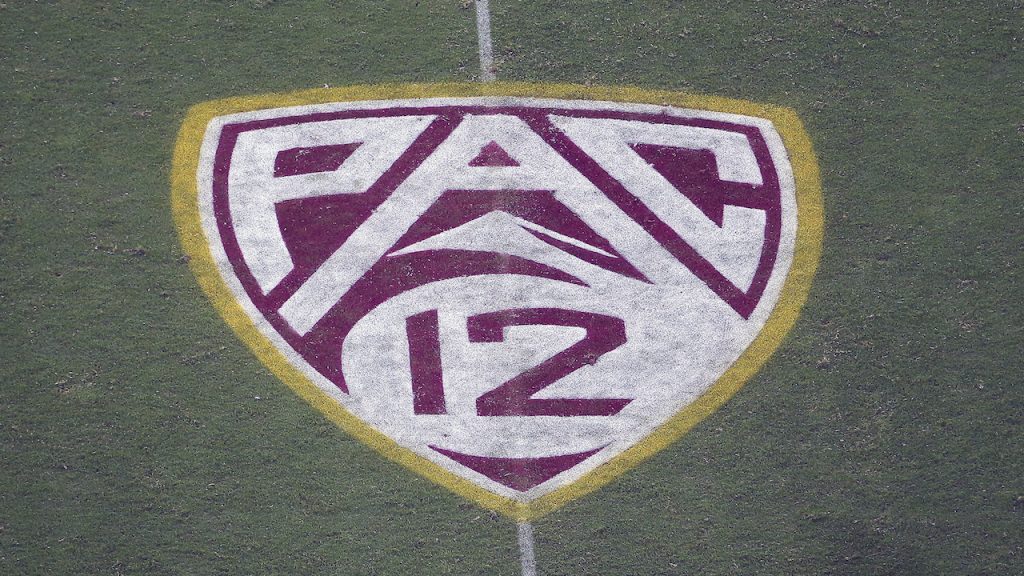It took 13 months, eight days and many millions of dollars, but the Pac-12 is off the mat.
It’s not the same Pac-12 that existed for 109 years — it will never be the same. But the conference wrote the first sentence of its next chapter on Thursday when two schools became six schools in an expansion move that rippled across the West.
Boise State, Colorado State, Fresno State and San Diego State were officially admitted by the Pac-12’s remaining schools, Washington State and Oregon State, and will begin competition in the summer of 2026.
The thunderous development at once devastates the Mountain West and solidifies the future for Washington State and Oregon State, which were left for dead in the summer of 2023 when eight schools announced their departures from the Pac-12, following USC and UCLA out the door.
“For over a century, the Pac-12 Conference has been recognized as a leading brand in intercollegiate athletics,” Pac-12 commissioner Teresa Gould said in a news release issued by the conference early Thursday.
“We will continue to pursue bold cutting-edge opportunities for growth and progress, to best serve our member institutions and student-athletes. I am thankful to our board for their efforts to welcome Boise State University, Colorado State University, California State University, Fresno, and San Diego State University to the conference. An exciting new era for the Pac-12 Conference begins today.”
But the reclamation project isn’t complete. The Pac-12 must add at least two more schools by the summer of 2026 in order to comply with NCAA rules. There will be no shortage of interested candidates — the remaining eight members of the Mountain West will seek salvation with the same desperation the Cougars and Beavers showed when the Pac-12 imploded.
The latest realignment wave to rock college sports featured a heavy dose of irony.
The Pac-12 fractured in the summer of 2023 precisely because its presidents repeatedly declined to expand the conference, believing Mountain West schools weren’t good enough.
It fractured because former commissioner George Kliavkoff pursued misguided strategies and failed to understand the DNA of realignment: urgency is paramount; self-interest is king; and strength lies in numbers.
His successor, Teresa Gould understands the landscape and worked closely with Washington State and Oregon State to position the conference to pounce when the chance presented itself.
The $250 million in assets (approximately) secured last winter through the negotiated settlement with the departed schools created the war chest needed to lure new members. (Combine the exit fees and penalties owed to the Mountain West, and the price for the quartet to join the Pac-12 is likely to reach $110 million.)
With the bait secured, the Pac-12 then identified its targets using time-tested expansion criteria: competitive success, especially in football and men’s basketball; academic reputation; media value; geographic fit; and overall institutional alignment.
An outright raid of the Mountain West was always an option for the Pac-12 once it won control of the assets from the 10 departed schools.
So, too, was a reverse merger, by which at least nine Mountain West schools would join the Pac-12. But that proved too complicated.
In the end, the Pac-12’s brand, depleted as it might be, ruled the day. The schools concluded there was more value available — more brand awareness, more sponsorship opportunities, more intellectual property wealth — by competing under the Pac-12 banner than in the Mountain West.
The former has been around, in one form or another, for a century; the latter has existed for a mere 25 years.
Pac-12 Enterprises also played a role. The production arm of what was the Pac-12 Networks has a broadcast studio and cutting-edge technology that could enhance the media rights component of the rebuilt conference.
(The schools have seen that play out in real time, with The CW using the Pac-12 Enterprises to produce Washington State and Oregon State games this fall.)
The move comes 11 days after the Pac-12 and Mountain West failed to agree to extend their football scheduling partnership into the 2025 season. The former felt the cost ($14 million) was too high; the latter would not accept a lower fee.
(The Mountain West “overplayed” its hand, according to a source.)
What’s next for the Pac-12?
Well, Washington State and Oregon State must complete their football schedules for the 2025 season.
Concurrently, the six schools must collectively identify and invite at least two more members by the late spring in order to ensure departures take place in time to begin competition in the summer of 2026.
Also, the conference needs a media rights deal for 2026 and beyond. With membership essentially set, negotiations with interested media companies can commence.
Finally, there is the neverending search for new streams of revenue. Depending on changes to NCAA rules and approval by the university presidents, the Pac-12 could pursue an infusion of private capital, sell naming rights, monetize data or wear commercialized jersey patches.
Anything’s possible, as the past 24 hours — not to mention the past 13 months — have shown.
Related posts:
 Wilner Hotline: Eight need-to-knows for Week Nine of Pac-12 football
Wilner Hotline: Eight need-to-knows for Week Nine of Pac-12 football

(AP Photo/Rick Scuteri)
Arizona football: Tracing the roots of the Wildcats’ rise, from the 2020 gutter to the 2023 title chase Wilner Hotline: Jedd Fisch leaves UA for Washington
Wilner Hotline: Jedd Fisch leaves UA for Washington

Arizona waves their flag (AP Photo/Rick Scuteri)
Pac-12 rewind: Arizona rolls as Washington State and Oregon keep pace while UCLA suffers gut-punch lossJon Wilner
Jon Wilner has been covering college sports for decades and is an AP top-25 football and basketball voter as well as a Heisman Trophy voter. He was named Beat Writer of the Year in 2013 by the Football Writers Association of America for his coverage of the Pac-12, won first place for feature writing in 2016 in the Associated Press Sports Editors writing contest and is a five-time APSE honoree.
